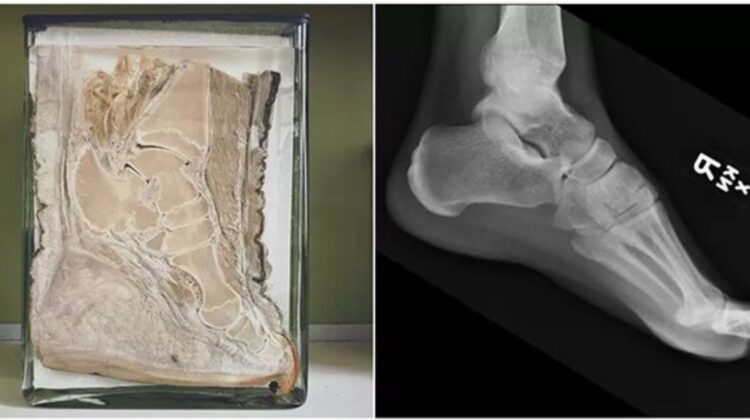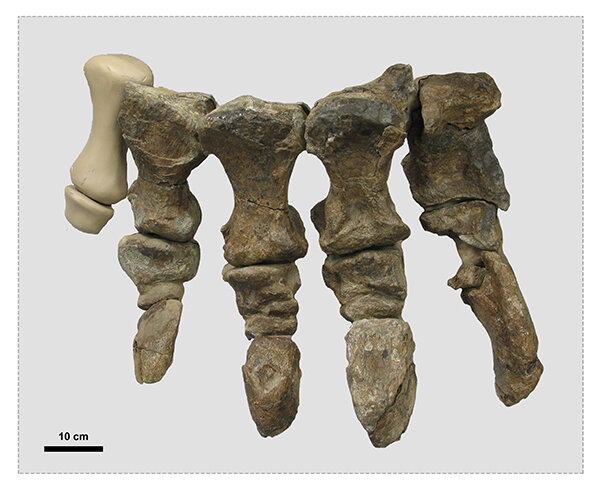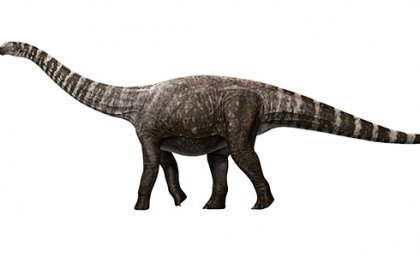
A new study conducted by researchers at the University of Queensland has revealed that the Rhoetosaurus brownei, a 24-tonne dinosaur, may have walked on its tiptoes, similar to how humans wear high heels. The research, which analyzed fossils of Australia’s only named Jurassic sauropod, aimed to better understand how such an enormous creature could support its own body weight.
Andréas Jannel, a Ph.D. candidate at the University of Queensland and part of the research team, explained that by looking at the bones of the foot, it was clear that the Rhoetosaurus walked with an elevated heel, which raised the question of how its foot was able to support its immense mass, which could reach up to 40 tonnes.

The research revealed that the dinosaur’s heel was cushioned by a fleshy pad, which is similar to what is found in an elephant’s foot. However, the Rhoetosaurus was at least five times heavier than an elephant, so the forces involved were much greater. The presence of the cushioning pad that supports the raised heel appears to be a key innovation during the evolution of sauropods, and probably appeared in early members of the group some time during the Early to Middle Jurassic Periods.

The team arrived at this conclusion by creating a replica of the fossil and then physically manipulating it in an attempt to understand the movement between bones. They also used 3-D modeling techniques to assess the different foot postures that would have allowed the Rhoetosaurus to support its weight. Additionally, they looked at a range of sauropod footprints from around the world, many of which indicated the presence of a fleshy heel pad behind the toes, supporting what the bones were telling them.
The fossils of the R. brownei specimen were found near Roma in southwest Queensland and are dated to 160-170 million years ago when Australia was part of the supercontinent of Gondwana. Jannel is now using computer techniques to simulate how different foot postures and the presence of a soft tissue pad affect stress distributions within the bones.

Overall, this study provides new insights into the evolution of sauropod dinosaurs and how their feet were able to support their enormous body sizes. As Jannel noted, there’s much more to know, but this research shows that becoming ‘high-heeled’ may have been an important step in the evolution of these giant creatures.

Leave a Reply